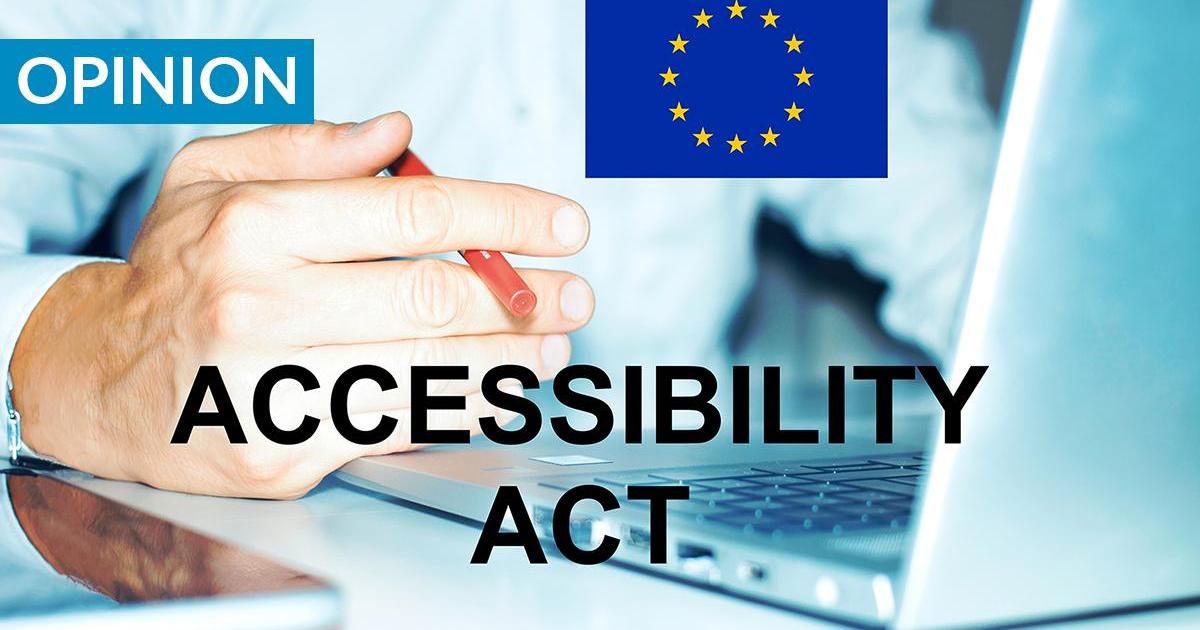The EU Accessibility Act (EAA) came into force on June 28. In simple terms, it requires businesses to make their digital products and services accessible to people with disabilities. While the original directive includes several long-standing obligations, such as those on physical accessibility, this latest iteration brings renewed focus on digital and online accessibility.
The recent updates are primarily targeted at large enterprises, including national service providers and consumer product manufacturers whose offerings are intended for public use. The directive seeks to ensure that widely used devices and services are fully accessible, whether they are imported or provided locally. Digital hardware used to deliver common services such as access control, online banking, ATMs, e-commerce, online booking and ordering must be designed to be fully accessible to users with any type of disability.
Governments face a significant challenge in complying with the new standards as all government’s digital assets need to be compliant. As most of these services are indispensable to practically everyone, they are directly impacted. Here in Malta, a lot of progress has been made in this regard with the work of the relevant government entities and CRPD but a lot remains to be done. Small businesses are not entirely off the hook either and non-compliance can result in hefty fines.
In reality, most micro and small businesses are exempt except for those selling products through an eCommerce platform to local or international customers, however small they may be. Informational and corporate websites with no online sales function are largely excluded. That said, even these businesses can benefit from complying with the updated accessibility standards.
In Europe, there are over 100 million people with disabilities of some sort, which is a market too large to overlook.
Furthermore, search engines are now penalising inaccessible websites, which means that a fully accessible website can bring more traffic and potential customers.
Brand reputation can also benefit by having a fully accessible digital identity.
The goal of the directive, and its implementation in Malta, is not to burden businesses unnecessarily but to ensure that people with disabilities can access eCommerce platforms, including those run by micro-enterprises. In fact, the legislation also includes an exemption clause.
Small businesses that cannot afford the required changes and upgrades or if the cost will have a significant impact on their operations can apply for an exemption through a formal process.
In Europe, there are over 100 million people with disabilities, which is a market too large to overlook
This process involves documentation and effort, the cost and complexity of which are not yet fully known. It may be more practical and cost-effective to simply implement the necessary updates.
Additionally, the directive promotes a “design for accessibility” approach, which means that accessibility should be considered and built into new online projects from the very beginning. Adhering to the standards of the directive from the start is not too hard and much easier than making changes later when pressed to comply.
A lot of questions arise, such as, would a B2B Wholesale eCommerce site with a limited audience have to comply? To access these sites, a user would typically need a login and password, which would be supplied by the site owner. Arguably, if none of the users have special needs, why would the owner have to abide by the standards?
While researching for this article, this question was raised and the straight answer is ‘no’ unless one of the resellers has disability issues. So, in this case, if there are no users with special needs, nothing needs to be done. If, however, there is a complaint, the owner would have to accommodate the needs of the complainant.
Small businesses with eCommerce platforms in Malta first need to know how compliant they are to begin with. This can easily be done using one of the numerous free online accessibility scanners. The results will highlight the areas needing improvement. Unless the business has the expertise in-house, a web developer would need to be involved to implement the changes.
Fortunately, many of the required updates can be addressed using plug-ins or add-ons, which are inexpensive and readily available. Most of these provide features such as changing text size, colours, zooming and so on. These extensions, however, will not add descriptive tags to product images and getting that done manually can be a considerable challenge. If the task is unsurmountable with the current resources, at the very least, businesses can devise a strategy that, from now on, all product images include the necessary descriptive tags.
The idea behind adding descriptions to all images is so that persons with low eyesight can use screen readers. These readers will only read out the hidden text behind the image and, without that, they will simply just say ‘image’ or read the image filename.
Another key factor is raising awareness within both private enterprises and government institutions. Staff should understand accessibility, not only in terms of physical access but also digital accessibility. In some cases, a brief explanation may be sufficient, while in others, structured training can be invaluable.
Ultimately, the most effective way to ensure your website meets the requirements of the directive is to gather feedback directly from individuals with disabilities. Their insights are invaluable in assessing the real-world impact of your efforts.
Marcel Mizzi is a council member at the Malta Chamber of SMEs.
